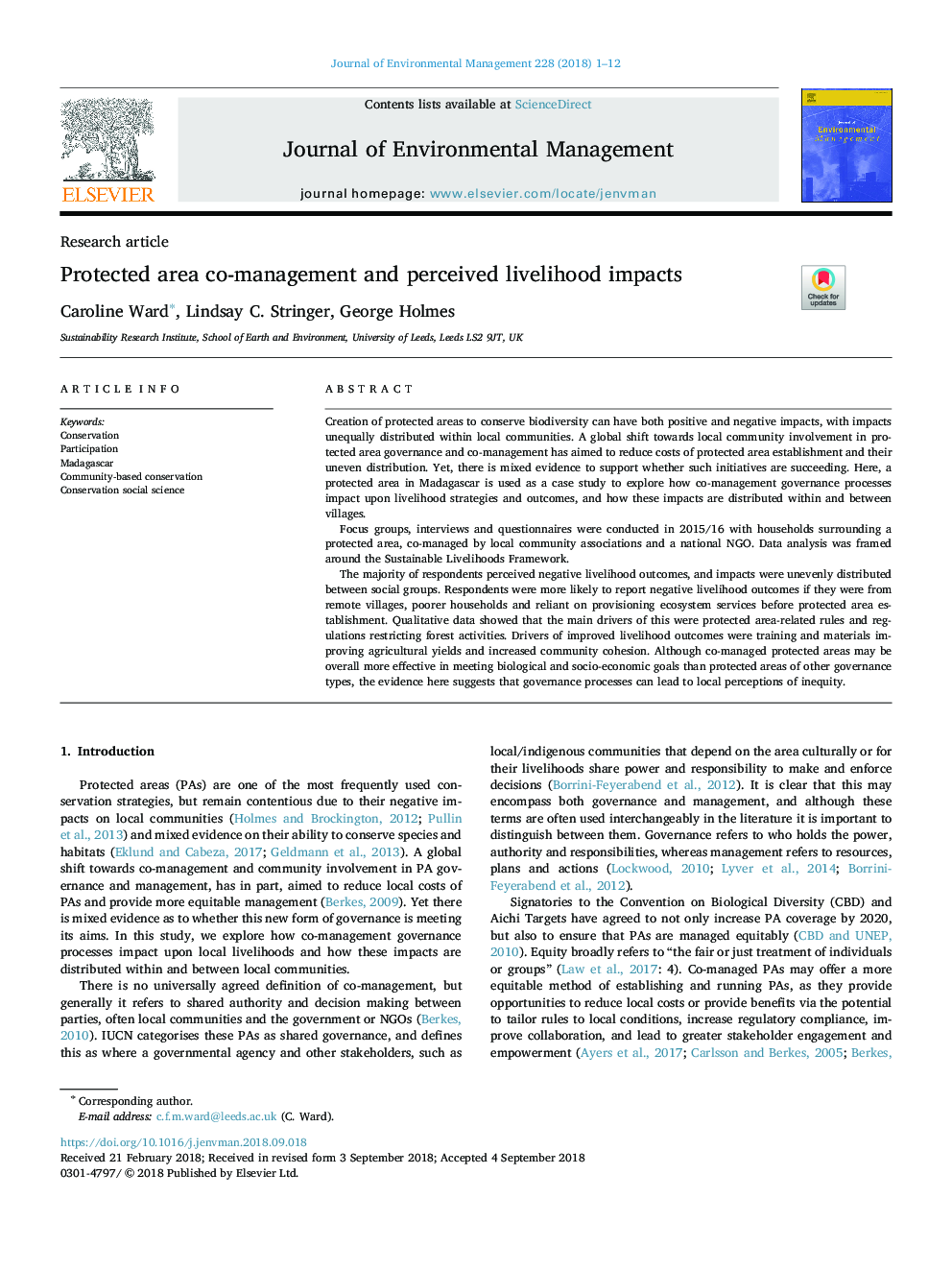| Article ID | Journal | Published Year | Pages | File Type |
|---|---|---|---|---|
| 10149006 | Journal of Environmental Management | 2018 | 12 Pages |
Abstract
The majority of respondents perceived negative livelihood outcomes, and impacts were unevenly distributed between social groups. Respondents were more likely to report negative livelihood outcomes if they were from remote villages, poorer households and reliant on provisioning ecosystem services before protected area establishment. Qualitative data showed that the main drivers of this were protected area-related rules and regulations restricting forest activities. Drivers of improved livelihood outcomes were training and materials improving agricultural yields and increased community cohesion. Although co-managed protected areas may be overall more effective in meeting biological and socio-economic goals than protected areas of other governance types, the evidence here suggests that governance processes can lead to local perceptions of inequity.
Related Topics
Physical Sciences and Engineering
Energy
Renewable Energy, Sustainability and the Environment
Authors
Caroline Ward, Lindsay C. Stringer, George Holmes,
